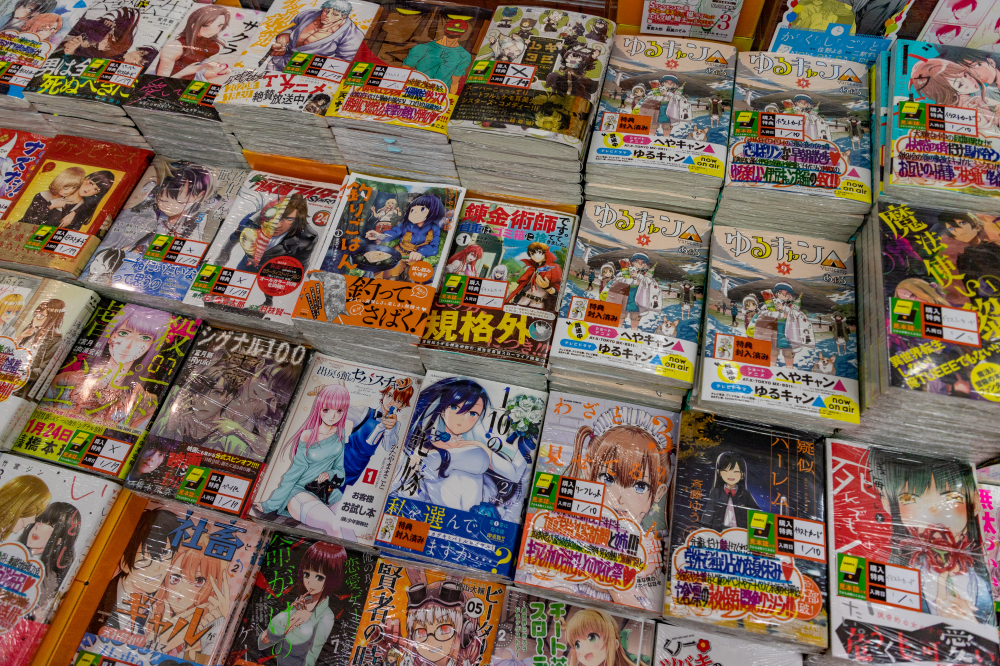Manga is often published chapter-by-chapter in anthology magazines which are marketed towards particular audiences. Some magazines focus on specific genres of manga (like fantasy, romance, etc.) while others publish stories in a variety of genres. Most manga magazines are aimed at a target audience of a specific age and gender.
Here’s the vocabulary used to describe different types of manga:
Shonen (also shōnen or shounen)
Shonen manga is aimed at adolescent boys. Stereotypically, shonen manga features plenty of action and battles as a male protagonist goes on a hero’s journey. However, in reality, shonen manga contains several diverse genres — there are certainly plenty of action series, but also series that focus on comedy, sports, romance, horror, slice-of-life, or LGBT+ stories. Examples of famous shonen manga include Dragon Ball, One Piece, Naruto, and Bleach. For more shonen manga, check out this list.



Shojo (also shōjo or shoujo)
Shojo manga is aimed at adolescent girls. Stereotypically, shojo manga focuses on interpersonal relationships and/or romance. It also usually features a distinctive visual style — for example, characters often have large, sparkly eyes. Examples of well-known shojo manga include Sailor Moon, Fruits Basket, Nana, and Ouran High School Host Club. For even more shojo manga, check out this list.



Seinen
Seinen manga is aimed at adult men. While similar to shonen manga in terms of diversity of genre, seinen manga is aimed at an older audience. As a result, seinen manga is sometimes stereotyped as dark and gritty and assumed to include more explicit violence or sexual content than shonen manga. While that is true for some titles, there are also plenty of seinen manga series that don’t include explicit content and are slow-paced or lighthearted in tone. Examples of well-known seinen manga include Tokyo Ghoul, Berserk, 20th Century Boys, and Kaguya-sama: Love Is War. For even more seinen manga, check out this list.



Josei
Josei manga is aimed at adult women. Josei works are often similar to shojo in style but can feature adult protagonists and focus on more mature subjects like careers or parenthood. Josei manga can also potentially include more explicit sexual content than shojo manga. Examples of well-known josei manga include Princess Jellyfish, Chihayafuru, My Lesbian Experience with Loneliness, and Wotakoi: Love Is Hard for Otaku. For even more josei manga, check out this list.




Final note:
Shonen, shojo, seinen, and josei are terms used by Japanese publishers to describe their target audience, but people of all ages and genders can enjoy manga from any of these categories. It can be helpful to understand the stereotypes surrounding these terms, but ultimately each category features a diverse array of topics, genres, and art styles.
In our next installment of Manga 101, we’ll begin to take a look at some popular manga genres.
Have a question for Free Library staff? Please submit it to our Ask a Librarian page and receive a response within two business days.

